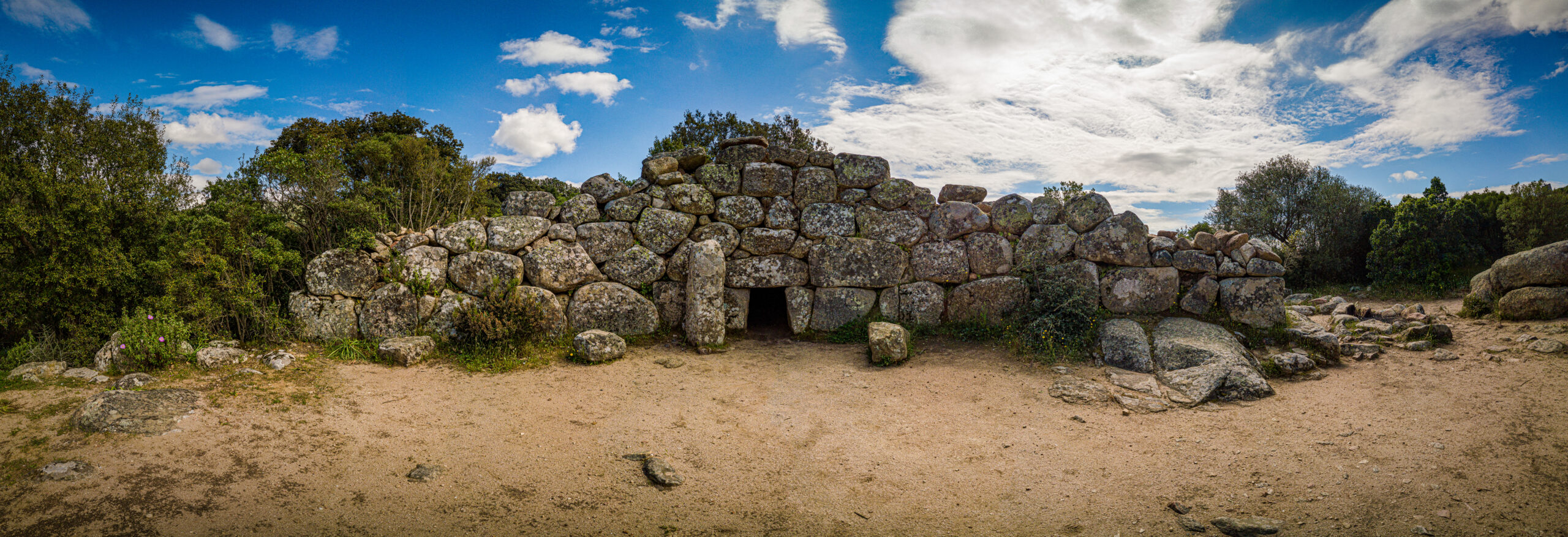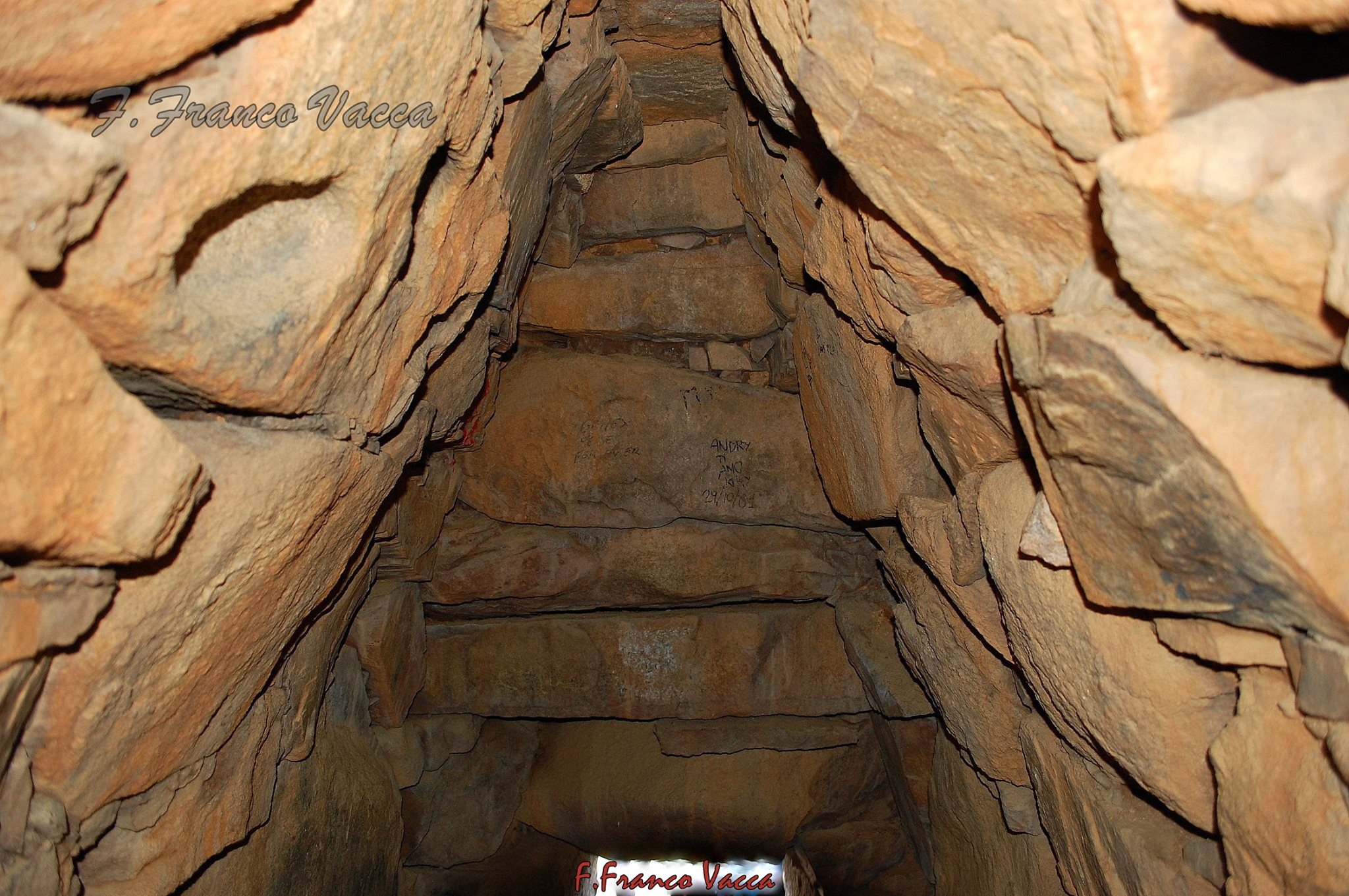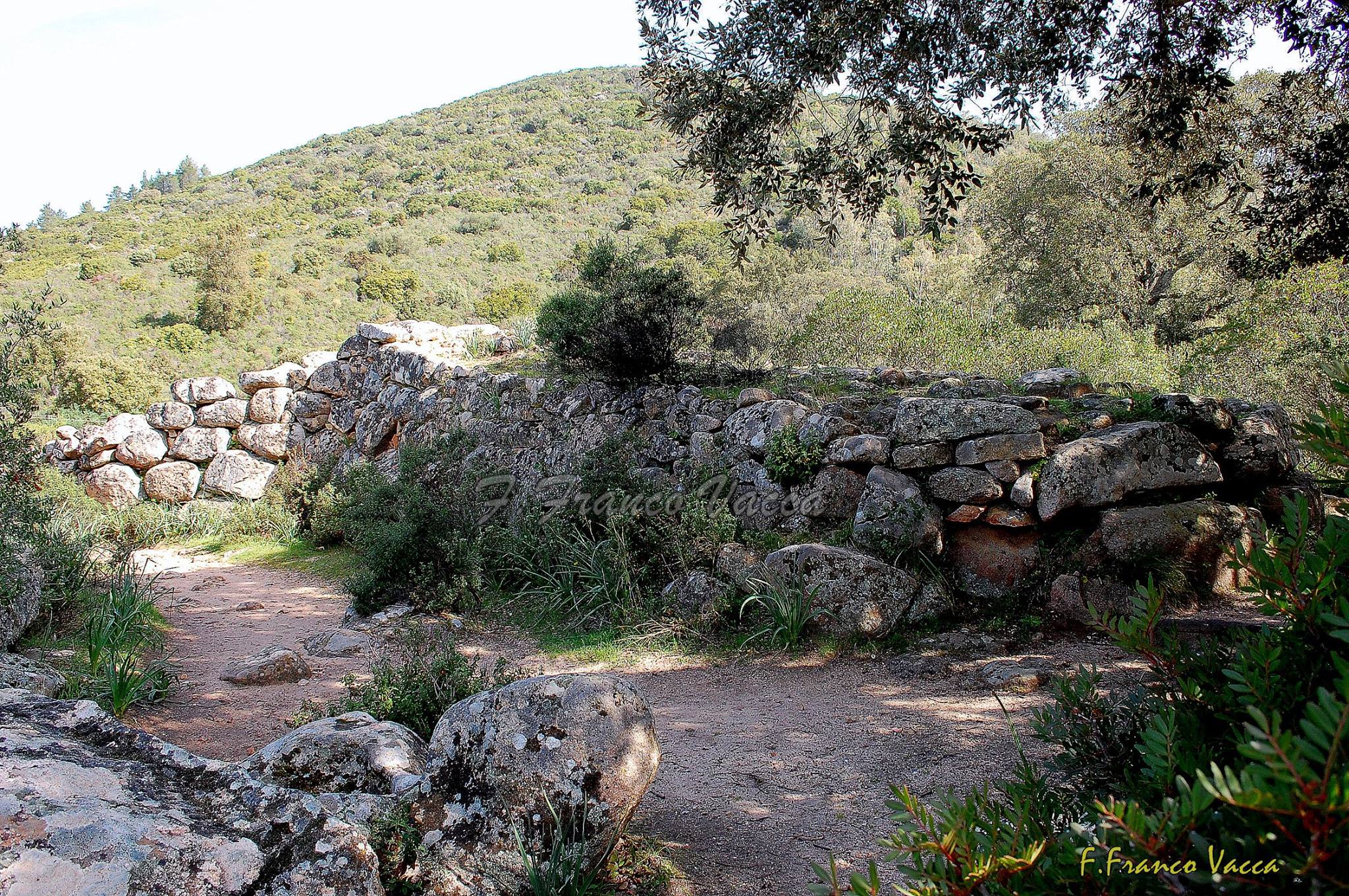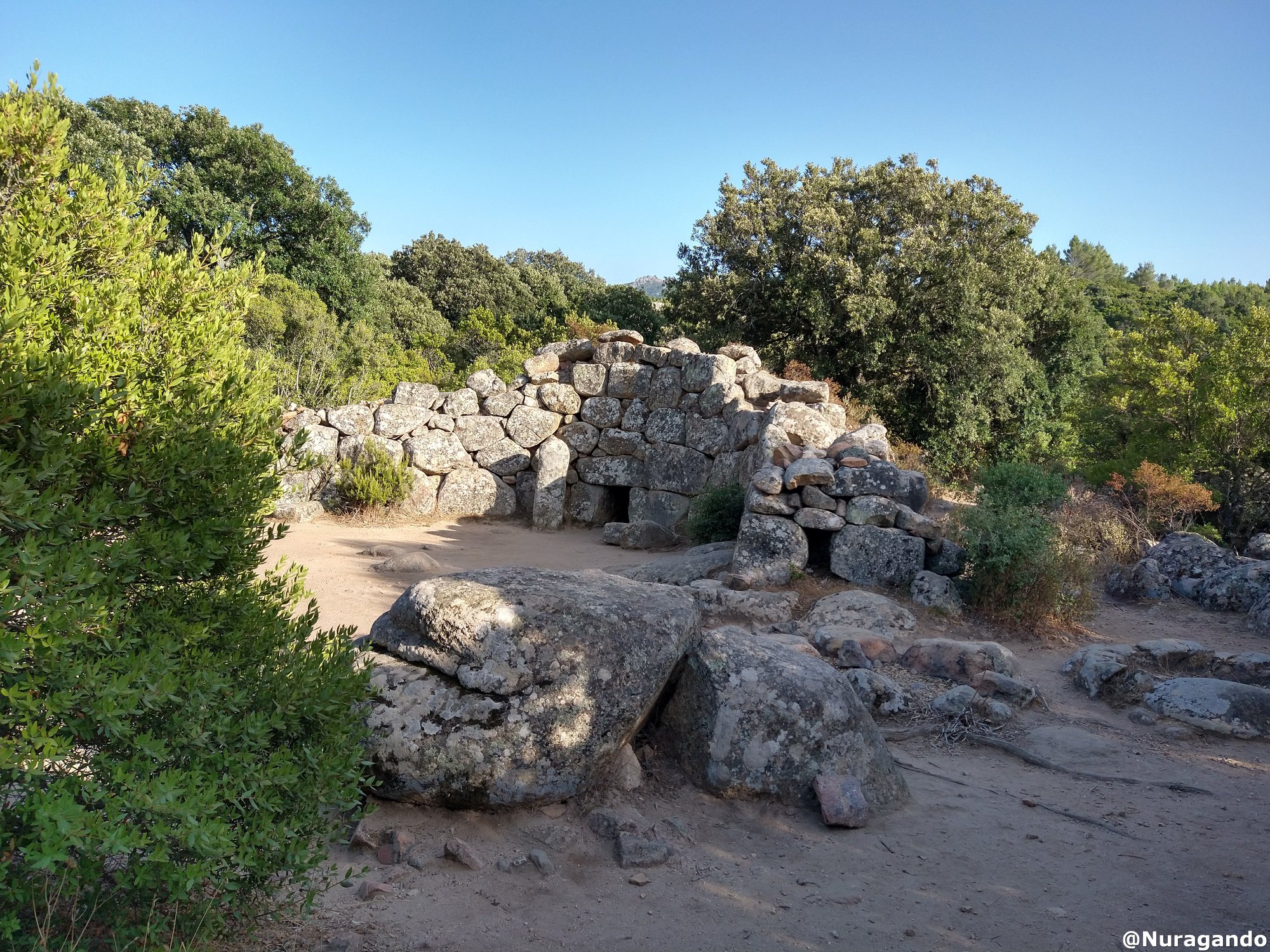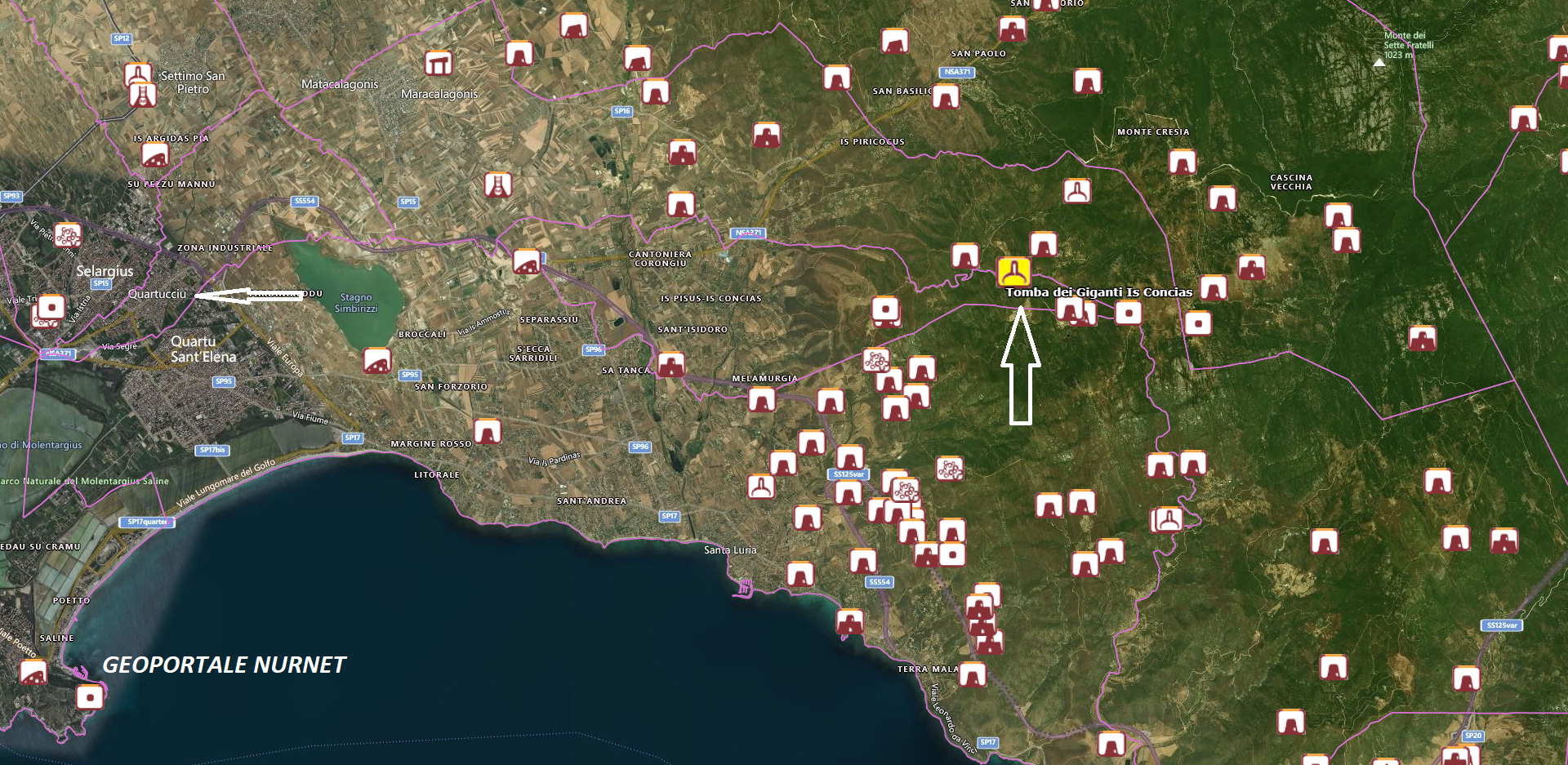29 – The Giant’s Tomb Is Concias, in Quartucciu, is one of the 31 sites proposed to Unesco as emblematic of the grandiose nuragic civilization, its history, and its vast material testimonies.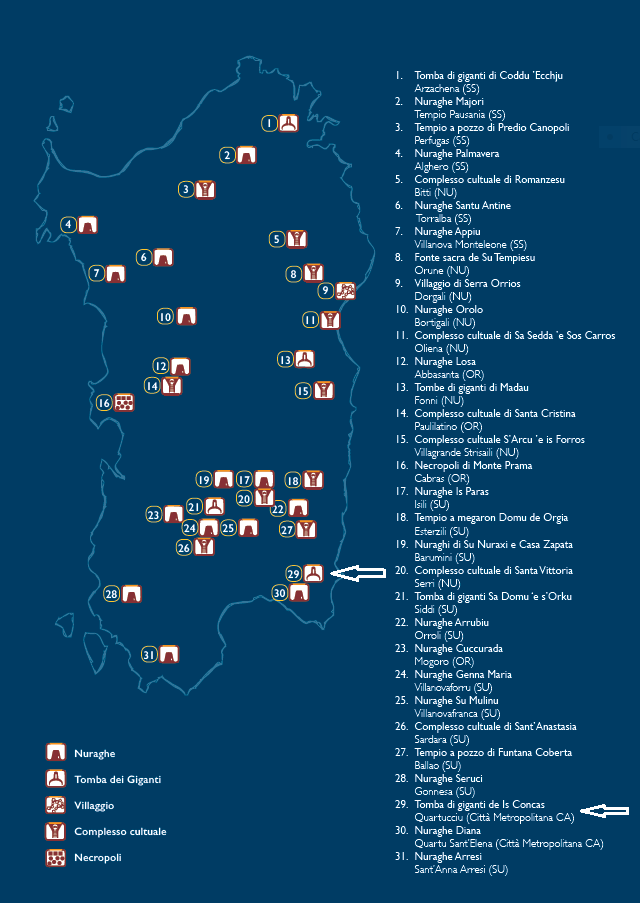 The burial is also known asthe house of the owl, ‘the house of the ogre, a common name for numerous nuragic funerary monuments, deriving from the belief that enormous monstrous and evil beings were hidden there. It stands at an altitude of 350 meters, in a location called San Pietro Paradiso, a short distance from a small countryside church dedicated to the saint, along a road that leads to the top of theMont’e Cresia, inside the large and evocativePark of the Seven BrothersThe monument, dated between the Middle and Late Bronze Age, has a typical rectangular body structure with a wide semicircular exedra, built with rows of granite stones decreasing in size from the two sides towards the center. At the entrance, two doorposts topped by a lintel and a granite betilo, a symbol of fertility, can be seen, discovered during the excavations. The internal chamber is about eight meters long, the rows are protruding, and the height decreases as it proceeds towards the apsidal end, down to about one meter and seventy. Leaning against the closing slab, a rectangular bench can be noted, possibly used to deposit offerings. The floor is the leveled rocky surface. Exploring the surroundings of the tomb, three pits can be observed, dug into the rock and surrounded by stones: these are hearths or small votive wells for offerings, used in funerary rites.
The burial is also known asthe house of the owl, ‘the house of the ogre, a common name for numerous nuragic funerary monuments, deriving from the belief that enormous monstrous and evil beings were hidden there. It stands at an altitude of 350 meters, in a location called San Pietro Paradiso, a short distance from a small countryside church dedicated to the saint, along a road that leads to the top of theMont’e Cresia, inside the large and evocativePark of the Seven BrothersThe monument, dated between the Middle and Late Bronze Age, has a typical rectangular body structure with a wide semicircular exedra, built with rows of granite stones decreasing in size from the two sides towards the center. At the entrance, two doorposts topped by a lintel and a granite betilo, a symbol of fertility, can be seen, discovered during the excavations. The internal chamber is about eight meters long, the rows are protruding, and the height decreases as it proceeds towards the apsidal end, down to about one meter and seventy. Leaning against the closing slab, a rectangular bench can be noted, possibly used to deposit offerings. The floor is the leveled rocky surface. Exploring the surroundings of the tomb, three pits can be observed, dug into the rock and surrounded by stones: these are hearths or small votive wells for offerings, used in funerary rites.
The photos of the Tomba di giganti Is Concias, in Quartucciu, are by Valentino Selis, Nicola Castangia, Bibi Pinna, Nuragando, and Franco Vacca.